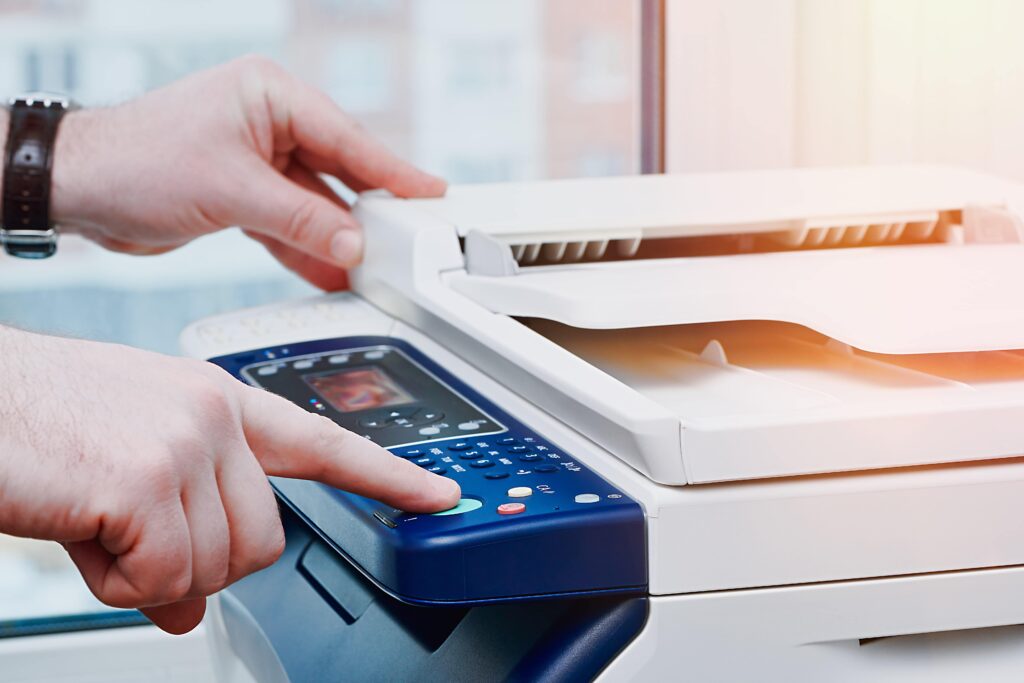Even in business offices that have largely transitioned to paperless operations, printer hardware remains an essential tool for a wide range of business activities. From signage to contracts to materials that employees and clients don’t want to read from a screen, the ability to print will affect both your office workflows and your customer experience.
If you’re in the market for new printers to outfit your office space, you might be trying to decide between (business printers) or (small business printers) designed for home office use. While large commercial printers stand out for their higher price tag, there are many other differences that need to be considered when choosing the right type of printer for your business. To avoid common Printer Issues and make an informed decision, it’s essential to assess your specific printing needs and consult with experts in the field.
Read on for a simple breakdown of the differences between these two classes of printers.
Device Space Requirements
If you’ve ever placed business and home-use printers side-by-side, the difference in size is clear. Commercial printers are far larger than their home-use counterparts, due to the need for increased paper and toner storage space, among other reasons.
While some of these business printers are slimmed-down compared to previous versions of this office hardware, you can still expect small business printers to be much more economical with their space.
Print Volume
Business printers are designed to print thousands—potentially tens of thousands—of pages per month. They’re also designed to do this in a cost-effective way.
Home use printers are more economical for smaller print volumes, but as this printing workload increases, business printers become more advantageous to handle these workloads. They’ll require fewer refills of paper and toner, can print faster, and will require less maintenance relative to this volume of printing than home printers.
Business printers will likely also offer a longer life expectancy as a result, as these models are built for long-lasting performance.
Ink vs. Toner
The choice between an ink and toner printer has a significant impact on your long-term printing costs. Toner is cheaper and more efficient for printing than traditional print ink. While the hardware involved in making toner printers can make this hardware more expensive to purchase, the lifetime savings on toner, as compared to ink, are significant.
When calculated on a per-page basis, ink is far more expensive than toner. But ink is often a higher quality print, and (home business printers) may also offer color printing options, which may benefit certain offices depending on their printing needs. At lower printing volumes, the difference in price between toner and ink won’t be as significant.
Device Sharing Capabilities
Home-use printers can typically be used by one or two users without any connectivity issues, or without overloaded print jobs that create hardware problems. But if you want a large group of people to be relying on a single printer, it probably needs to be a business printer.
Business printers are designed to accommodate a number of different print users, as well as print jobs that may arrive simultaneously. The faster printing speed of a business printer also helps your employees avoid logjams as they wait for their materials to be printed.
On-Site Service and Maintenance
Interested in a maintenance service that will visit your printers on-site to provide maintenance and repair when your hardware breaks down? This arrangement is more common with business printers, although some service providers may be willing to work with home-use printers as well.
Talk to any prospective service partner to find out what types of printer hardware they do and don’t service on a regular basis.
Specialized Formats
In need of printing for extra-large formats, including potentially signage for your business? You’ll need to look into the business printer models that can provide this service. Specialized formatting is typically not available among home-use printing options.
If you regularly need these specialized printing services, you might be better off buying your own large-format printer rather than shipping your print projects off to a printing service.
Buying vs. Leasing
If you want to buy a printer outright, you can choose between both home and business printer models. But some businesses prefer to lease this equipment on an ongoing basis, sparing themselves the greater up-front cost of buying a printer and spreading that cost out over time.
If leasing interests you, you’ll have to choose among business printer models. (Leasing printers for business) is a particularly common path if that lease is associated with outsourced printer/hardware maintenance. If your leased equipment needs to be replaced, your service provider can swap in a new model without burdening your business with warranty information and/or the up-front cost of a new printer.
Looking for more info on available printer options—or ready to buy or lease new printers for your office? Contact us today to see how we can help.
